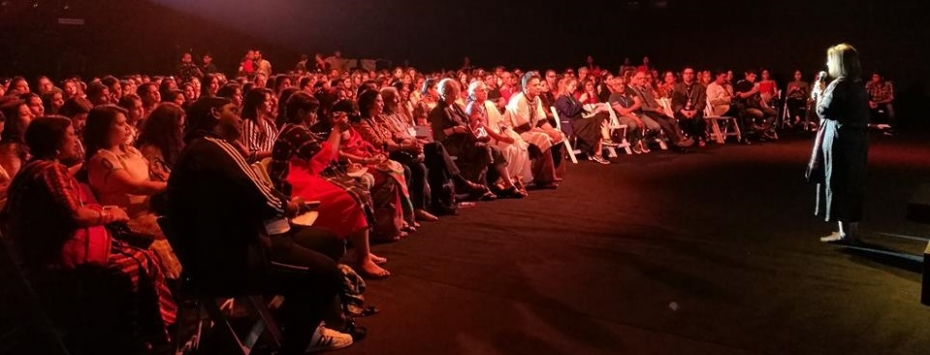We screened two short films that explored the warp and weft of our country’s incredible weaving culture, and talked about how the idea of weaving is intrinsic to the idea of India itself. The films were A Delicate Weave by Prof. Anjali Monteiro and Prof. K.P. Jayasankar from TISS & The Stitches Speak (Tanko Bole Chhe) by Prof. Nina Sabnani from IIT Bombay.
ABOUT THE FILMS:
A Delicate Weave
The documentary is set in Kachchh, Gujarat, India, and traces four different musical journeys, all converging in the ways they affirm religious diversity, syncretism and love of the other. Drawing on the poetic and musical traditions of Sant Kabir and Shah Bhitai, as well as the folk traditions of the region, these remarkable musicians and singers bear testimony to how these oral traditions of compassion are being passed down from one generation to the next.
Whether it is the group of young men in Bhujodi who meet every night to sing the bhajans of Kabir, or the feisty women from Lakhpat, who quietly subvert gender roles through their music performances, or Noor Mohammad Sodha, who plays and teaches exquisite flute music, or Jiant Khan and his disciples, whose love for the Sufi poet Bhitai is expressed through the ethereal form of Waee singing—all these passionate musicians keep alive this delicate weave, committed to the project of what Naranbhai, a carpet weaver and community archivist from Bhujodi calls “breaking down the walls”; walls that have been built up through the politics of hate and intolerance that marks our times.
The Stitches Speak (Tanko Bole Chhe)
Tanko Bole Chhe (The Stitches Speak) is an animated documentary which celebrates the art and passion of the Kutch artisans associated with Kala Raksha. The film traces multiple journeys made by the participants towards defining their identities and towards forming the Kala Raksha Trust and the School for Design. The film uses their narrative art of applique and embroideries through which they articulate their responses to life, and events as traumatic as the earthquake and as joyful as flying a kite. Through conversations and memories, four voices share their involvement in the evolution of a craft tradition.



